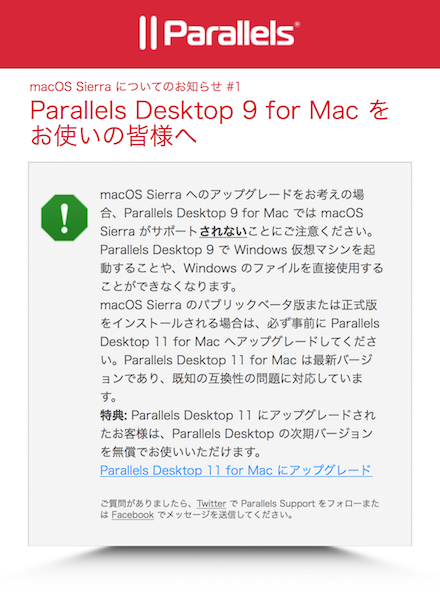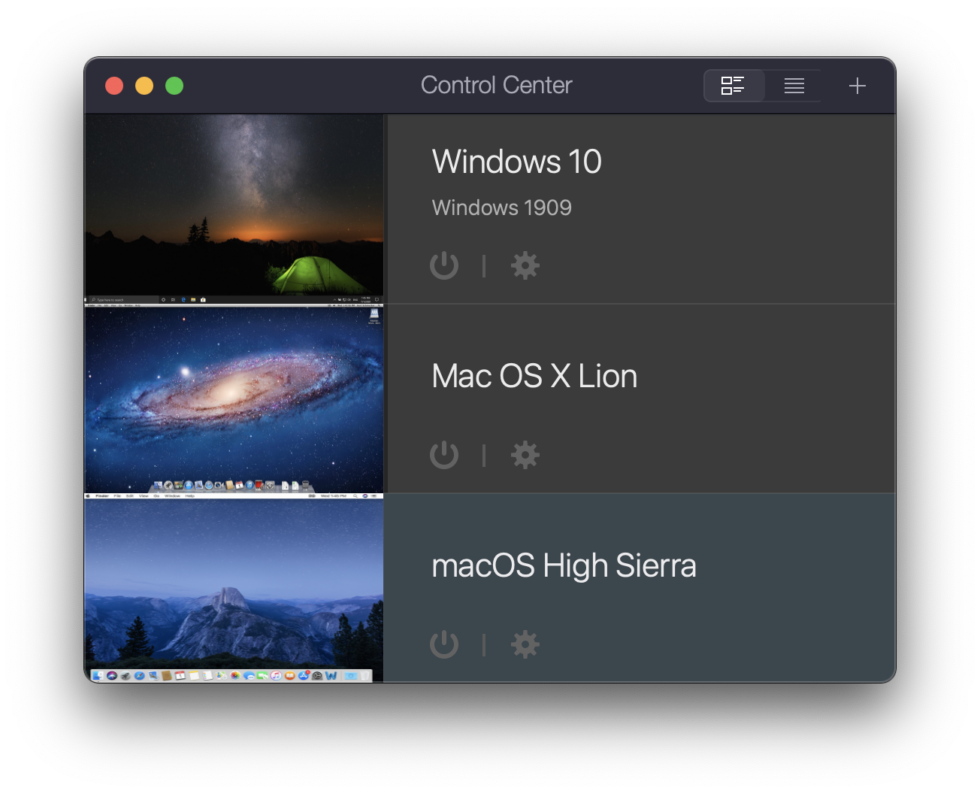If you intend to upgrade your Mac to macOS High Sierra or higher and keep using Parallels Desktop for Mac, we strongly recommend you.
To get the latest features and maintain the security, stability, compatibility, and performance of your Mac, it's important to keep your software up to date. Apple recommends that you always use the latest macOS that is compatible with your Mac.
- I also keep older operating systems around to occasionally run software like Final Cut Pro 7, which was orphaned with last year's macOS 10.13 High Sierra. Parallels Desktop 14 for Mac is now.
- The last time I upgraded my Mac, I had an issue because Parallels stopped working. Apparently, Parallels Desktop 7 worked for Lion (10.7), but not Mountain Lion (10.8). That was a frustration that I wanted to avoid. When Mavericks (10.9) comes out, I can upgrade my laptop without worrying that all of my Parallels Operating Systems will shut down.
Update my safari. Learn how to upgrade to macOS Big Sur, the latest version of macOS.

Check compatibility
If a macOS installer can't be used on your Mac, the installer will let you know. For example, it might say that it's too old to be opened on this version of macOS, or that your Mac doesn't have enough free storage space for the installation.
To confirm compatibility before downloading, check the minimum requirements for macOS Catalina, Mojave, High Sierra, Sierra, El Capitan, or Yosemite. You can also find compatibility information on the product-ID page for MacBook Pro, MacBook Air, MacBook, iMac, Mac mini, or Mac Pro.
Make a backup
Before installing, it's a good idea to back up your Mac. Time Machine makes it simple, and other backup methods are also available. Learn how to back up your Mac.
Download macOS
It takes time to download and install macOS, so make sure that you're plugged into AC power and have a reliable internet connection.
Safari uses these links to find the old installers in the App Store. After downloading from the App Store, the installer opens automatically.
- macOS Catalina 10.15 can upgrade Mojave, High Sierra, Sierra, El Capitan, Yosemite, Mavericks
- macOS Mojave 10.14 can upgrade High Sierra, Sierra, El Capitan, Yosemite, Mavericks, Mountain Lion
- macOS High Sierra 10.13 can upgrade Sierra, El Capitan, Yosemite, Mavericks, Mountain Lion
Safari downloads the following older installers as a disk image named InstallOS.dmg or InstallMacOSX.dmg. Open the disk image, then open the .pkg installer inside the disk image. It installs an app named Install [Version Name]. Open that app from your Applications folder to begin installing the operating system.
- macOS Sierra 10.12 can upgrade El Capitan, Yosemite, Mavericks, Mountain Lion, or Lion
- OS X El Capitan 10.11 can upgrade Yosemite, Mavericks, Mountain Lion, Lion, or Snow Leopard
- OS X Yosemite 10.10can upgrade Mavericks, Mountain Lion, Lion, or Snow Leopard
Install macOS

Check compatibility
If a macOS installer can't be used on your Mac, the installer will let you know. For example, it might say that it's too old to be opened on this version of macOS, or that your Mac doesn't have enough free storage space for the installation.
To confirm compatibility before downloading, check the minimum requirements for macOS Catalina, Mojave, High Sierra, Sierra, El Capitan, or Yosemite. You can also find compatibility information on the product-ID page for MacBook Pro, MacBook Air, MacBook, iMac, Mac mini, or Mac Pro.
Make a backup
Before installing, it's a good idea to back up your Mac. Time Machine makes it simple, and other backup methods are also available. Learn how to back up your Mac.
Download macOS
It takes time to download and install macOS, so make sure that you're plugged into AC power and have a reliable internet connection.
Safari uses these links to find the old installers in the App Store. After downloading from the App Store, the installer opens automatically.
- macOS Catalina 10.15 can upgrade Mojave, High Sierra, Sierra, El Capitan, Yosemite, Mavericks
- macOS Mojave 10.14 can upgrade High Sierra, Sierra, El Capitan, Yosemite, Mavericks, Mountain Lion
- macOS High Sierra 10.13 can upgrade Sierra, El Capitan, Yosemite, Mavericks, Mountain Lion
Safari downloads the following older installers as a disk image named InstallOS.dmg or InstallMacOSX.dmg. Open the disk image, then open the .pkg installer inside the disk image. It installs an app named Install [Version Name]. Open that app from your Applications folder to begin installing the operating system.
- macOS Sierra 10.12 can upgrade El Capitan, Yosemite, Mavericks, Mountain Lion, or Lion
- OS X El Capitan 10.11 can upgrade Yosemite, Mavericks, Mountain Lion, Lion, or Snow Leopard
- OS X Yosemite 10.10can upgrade Mavericks, Mountain Lion, Lion, or Snow Leopard
Install macOS
Follow the onscreen instructions in the installer. It might be easiest to begin installation in the evening so that it can complete overnight, if needed.
If the installer asks for permission to install a helper tool, enter the administrator name and password that you use to log in to your Mac, then click Add Helper.
Please allow installation to complete without putting your Mac to sleep or closing its lid. Your Mac might restart, show a progress bar, or show a blank screen several times as it installs macOS and related firmware updates.
Learn more
You might also be able to use macOS Recovery to reinstall the macOS you're using now, upgrade to the latest compatible macOS, or install the macOS that came with your Mac.
High Sierra is finally available! If you are reading this post, then you probably want to know if Parallels Desktop® 13 for Mac supports macOS® High Sierra. The quick answer is yes! Parallels Desktop 13 fully supports macOS High Sierra, both as a host OS and guest OS. The more detailed answer is in the rest of this post.
Terminology Check:
'Guest OS' means an operating system running in a Parallels Desktop virtual machine.
'Host OS' means the operating system running on the Mac®. You install Parallels Desktop on the host OS.
High Sierra was first shown to the world in June 2017 at the Apple Worldwide Developers Conference. Since that announcement, Apple® has provided developers with nine High Sierra beta releases, so that they can test their applications with High Sierra and provide Apple with details about any issues found and with suggestions for future work.
Although it was not generally known at the time, the Parallels team was into development of Parallels Desktop 13 when High Sierra was first announced. We eagerly downloaded each beta release and tested High Sierra as both a host OS and guest OS with early builds of Parallels Desktop 13. As expected, issues were found and they were fixed.
At one point during the development of Parallels Desktop 13, I was running a beta release of High Sierra on my Mac, a beta release of Parallels Desktop 13, and a Windows 10 beta release (called an 'Insider Preview' by Microsoft) as a guest OS—and a beta release of High Sierra as another guest OS. This is really life on the bleeding edge!
Parallels 9 Sierra Usb
Because of these early releases of High Sierra by Apple and the early releases of Windows 10 Insider Previews by Microsoft, we were able to ensure that Parallels Desktop 13 was ready for High Sierra as soon as it was released to the public by Apple. Our thanks to both of our partner companies for these early releases.
Here are a number of screenshots of Parallels Desktop 13 running on macOS High Sierra. The figure captions describe what is going in each screenshot.
Figure 1_Using the new Windows 10 People Bar support in Parallels Desktop 13 on macOS High Sierra
Figure 2_Using the new Picture-in-Picture view in Parallels Desktop 13 on macOS High Sierra
Parallels 9 Sierra Drive
Figure 3_Window 7 and macOS High Sierra running in Parallels Desktop 13 on macOS High Sierra
Figure 4_macOS High Sierra running in Parallels Desktop 13 on macOS High Sierra
Figure 5_Word for Windows 2016 in Windows 10 running in Parallels Desktop 13 on macOS High Sierra
Figure 6_Parallels Toolbox for Mac 20 on macOS High Sierra
Parallels 9 Sierra 10.13
Figure 7_Windows XP and Mac OS Lion running in Parallels Desktop 13 on macOS High Sierra
Figure 8_Windows 10 and Windows XP running in Parallels Desktop 13 on macOS High Sierra
There is still one issue with running Parallels Desktop 13 on a High Sierra Mac: You must manually allow Parallels Desktop to install a system extension. The details are explained here. Please make sure you follow those recommendations.
You can make your decision about when to migrate to High Sierra without worrying if Parallels Desktop 13 supports it. Tell us about your High Sierra migration in the comments.
Want to try High Sierra with Parallels Desktop 13? Antares autotune evo crack. Download a free 14-day trial!
